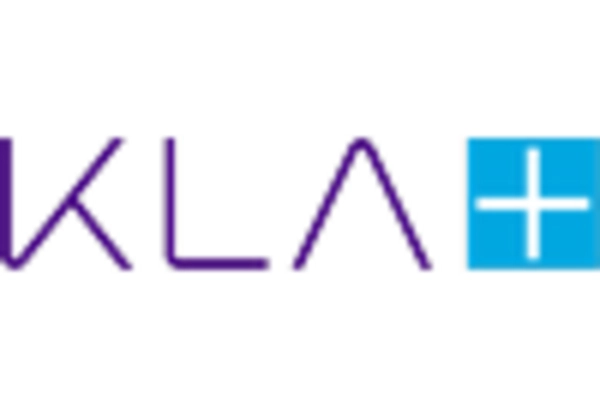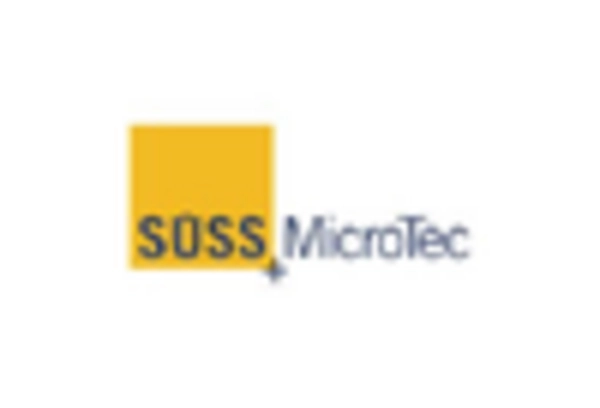Growth of Automotive Electronics
The rise of automotive electronics is emerging as a pivotal driver for the Semiconductor Bonding Equipment Market. With the automotive sector increasingly integrating advanced electronic systems for safety, navigation, and entertainment, the demand for high-performance semiconductors is escalating. The automotive semiconductor market is anticipated to reach approximately 100 billion USD by 2025, reflecting a significant opportunity for bonding equipment manufacturers. This growth is further fueled by the transition towards electric vehicles and autonomous driving technologies, which require sophisticated semiconductor solutions. As automotive manufacturers prioritize reliability and performance, the Semiconductor Bonding Equipment Market is poised to capitalize on this trend by providing innovative bonding solutions tailored to the unique requirements of automotive applications.
Emergence of Internet of Things (IoT)
The proliferation of the Internet of Things (IoT) is a transformative force impacting the Semiconductor Bonding Equipment Market. As IoT devices become ubiquitous across various sectors, including healthcare, agriculture, and smart cities, the demand for semiconductors is surging. The IoT semiconductor market is projected to grow significantly, with estimates suggesting it could reach over 50 billion USD by 2025. This growth necessitates advanced bonding technologies to ensure the reliability and efficiency of semiconductor components used in IoT applications. Consequently, manufacturers are likely to invest in innovative bonding equipment to meet the specific needs of IoT devices, thereby driving the Semiconductor Bonding Equipment Market forward.
Regulatory Push for Energy Efficiency
Regulatory frameworks aimed at enhancing energy efficiency are increasingly influencing the Semiconductor Bonding Equipment Market. Governments worldwide are implementing stringent regulations to promote energy-efficient technologies, particularly in the semiconductor sector. This regulatory push is expected to drive innovation in bonding equipment, as manufacturers seek to comply with energy standards while maintaining performance. The market for energy-efficient semiconductor solutions is projected to grow, with estimates indicating a potential increase in demand for bonding equipment that supports these technologies. As a result, the Semiconductor Bonding Equipment Market is likely to see a shift towards more sustainable practices, aligning with regulatory requirements and consumer preferences for energy-efficient products.
Advancements in Semiconductor Technology
Technological advancements in semiconductor manufacturing are significantly influencing the Semiconductor Bonding Equipment Market. Innovations such as 3D integration and heterogeneous integration are reshaping the landscape, necessitating the adoption of sophisticated bonding techniques. The market for semiconductor equipment is projected to grow at a compound annual growth rate of around 7% through 2025, indicating a robust demand for advanced bonding solutions. These advancements not only enhance the performance of semiconductor devices but also enable the development of smaller, more efficient components. As manufacturers seek to leverage these technologies, the Semiconductor Bonding Equipment Market is likely to witness increased investments in cutting-edge bonding equipment to facilitate the production of next-generation semiconductors.
Increase in Demand for Consumer Electronics
The Semiconductor Bonding Equipment Market is experiencing a notable surge in demand driven by the proliferation of consumer electronics. As devices such as smartphones, tablets, and wearables become increasingly sophisticated, the need for advanced semiconductor components intensifies. This trend is reflected in the projected growth of the semiconductor market, which is expected to reach approximately 600 billion USD by 2025. Consequently, manufacturers are investing in state-of-the-art bonding equipment to enhance production efficiency and meet the rising consumer expectations for performance and reliability. The Semiconductor Bonding Equipment Market is thus positioned to benefit from this escalating demand, as companies strive to innovate and maintain competitive advantages in a rapidly evolving landscape.















Leave a Comment